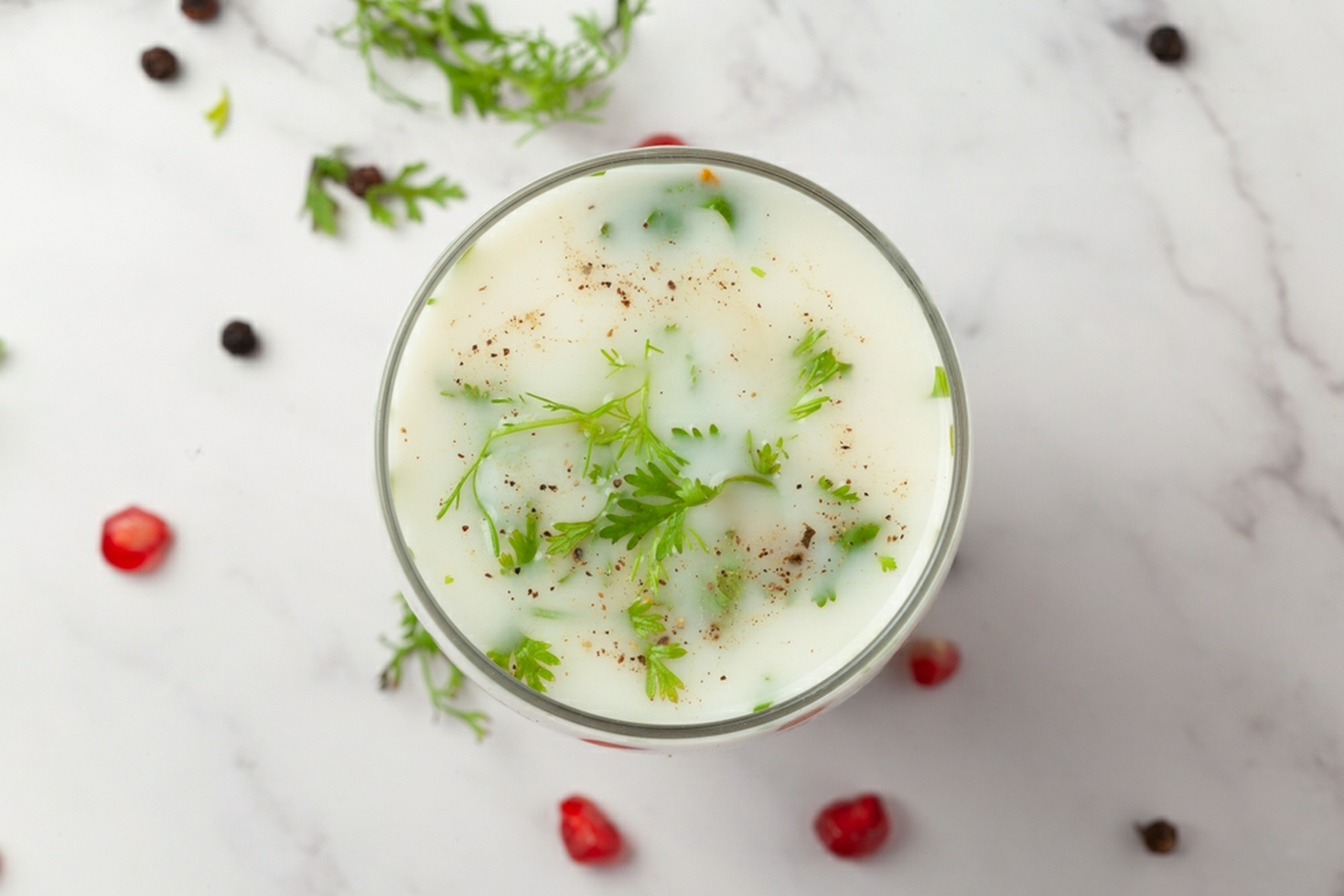
India's cooling buttermilk drink
" Chaas' origins of can be traced back thousands of years to the Indian subcontinent, where dairy products have always held cultural importance "
Chaas, sometimes called chaach or mattha, is a traditional Indian curd-based drink made from yoghurt. Refreshing, lightly spiced and naturally cooling, it has been a staple in Indian households for centuries, especially in hot and dry regions. With its balance of flavour and health benefits, chaas continues to be one of the most popular summer beverages across the subcontinent. In Indian English, it is often referred to as buttermilk.
How is chaas made?
The preparation of chaas is really simple. Plain yoghurt is churned with cold water until it reaches a smooth, slightly frothy consistency. Traditionally, this was done with a wooden whisk known as a madhani, though today many use a blender. The result is a drink thinner than yoghurt but creamier than flavoured water, with a naturally tangy taste.
Whilst the base remains the same, chaas has countless variations depending on the region and personal taste. Each variation reflects local culinary traditions and seasonal preferences. A classic version is salted chaas, seasoned with rock salt, roasted cumin powder and a pinch of asafoetida. This not only enhances the flavour but also aids digestion.
Some recipes add fresh coriander, curry leaves or chopped green chillies for a more robust character. Another popular style is masala chaas, where spices such as ginger, black pepper, chaat masala and mint leaves lend a lively kick. When spices are used they are usually roasted in a wok using a spoonful of cooking oil before being added.
Sweet chaas, although less common, is enjoyed in some areas with sugar or jaggery stirred in instead of salt and spices. Chaas can also be consumed plain.
When would you enjoy a chaas?
Usually served chilled which makes it an ideal antidote to the heat of an Indian summer. Consumed both as a refreshing drink on its own and as a digestive accompaniment to meals, particularly after a heavy or spicy lunch. Street vendors often sell it in earthen cups, which keep the drink naturally cool and add an earthy aroma.
Chaas’ origins of can be traced back thousands of years to the Indian subcontinent, where dairy products have always held cultural importance. In many rural households, yoghurt-making is a daily activity. Chaas is considered a by-product of this practice. Especially popular in states such as Gujarat, Rajasthan, Punjab and Maharashtra, though each region has its own twist. In the extremely hot desert areas of Gujarat and Rajasthan, people consume chaas with salt after getting exposed to the sun because this may aid rehydration.
Top tip
An earthenware pot is used to prepare chaas and store it for a few hours before consumption. Using earthenware to store the chaas helps keep it cool without the need to refrigerate it, even in the height of summer!
This timeless drink is more than just a beverage. Chaas is deeply woven into India’s food culture. Light, nutritious and endlessly adaptable, it’s a drink that has withstood time and changing tastes. Whether enjoyed plain, spiced, or sweetened, chaas continues to embody the essence of Indian home cooking: simple, refreshing and rooted in tradition.
Prepared by a Chaîne News Online Staff Writer
Researched from various sources. E&OE